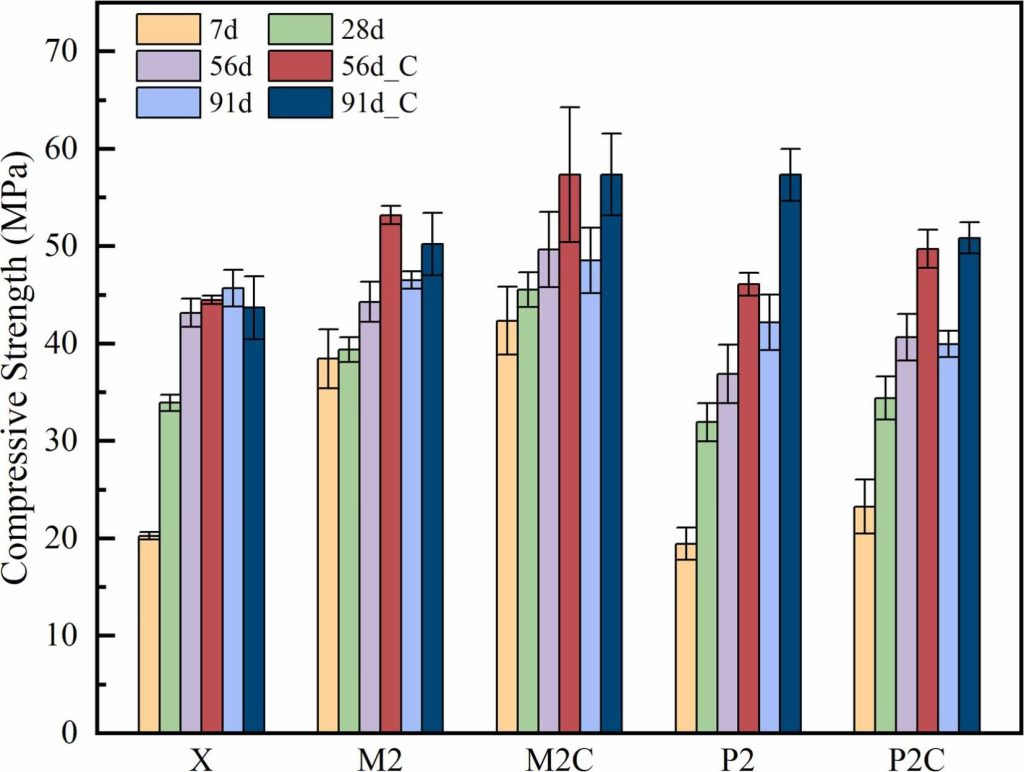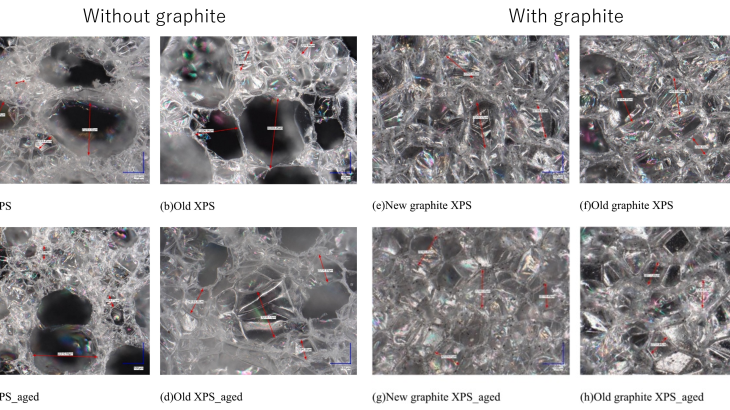Our group has been developing concrete technology that promotes CO2 fixation, with a focus on the addition of amines. The research we are conducting includes two methods: (1) a technique for impregnating into existing concrete (DAC Coat) and (2) a technique for adding amines to the mixture of new concrete (DAC Concrete). This paper focuses on the results of the latter method.We have developed a method that increases CO₂ fixation in thick new concrete while improving compressive strength, a key mechanical property, compared to concrete without additives.
Generally, adding amines enhances initial strength, but previous reports have shown that long-term strength tends to decrease slightly compared to concrete without additives. Additionally, recent studies worldwide have reported that attempting to achieve long-term strength often results in the loss of the CO₂ fixation promotion effect achieved through amine addition.In other words, there has been a trade-off between improving long-term strength and enhancing CO2 fixation.
Mr.Li and Ms.Pan’s research includes technical proposals to resolve this trade-off and involves experiments conducted with a rationale based on empirical evidence, rather than mere conventional wisdom, compared to existing amine-added concrete.Additionally, with practical application, they conducted LCC-based cost-performance evaluations and directly addressed how this concrete could become competitive within the price range of conventional concrete in Japan. (This was a major reason for submitting the paper to a chemical engineering journal.)
They are D2 students and now still conducting analyses and experiments, so I hope they take care of their health and continue to move forward with youthful vigor.
https://doi.org/10.1016/j.jece.2025.118658




